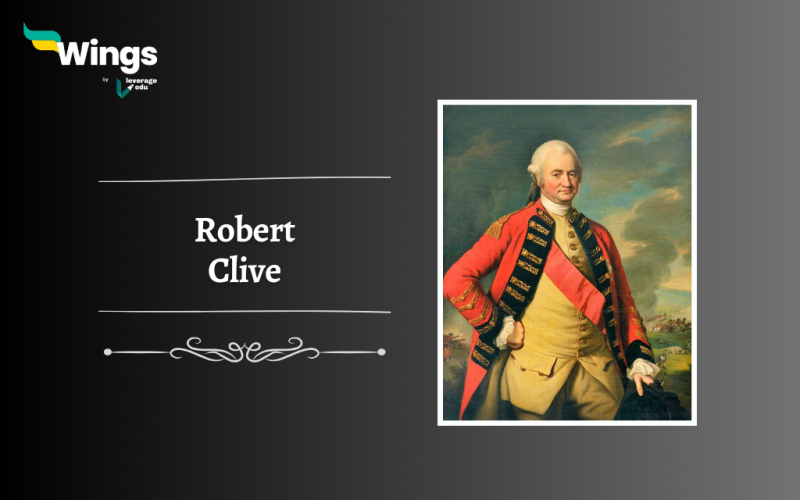Robert Clive was born on September 29, 1725, in Styche, Shropshire, England. He had a challenging upbringing because of his difficult temperament. Despite attending several schools, including Merchant Taylors’ School in London, Clive did not excel academically. His early years were marred by moodiness, attempted suicide and even a duel. At the age of 18, in 1743, Clive was sent to Madras in the service of the British East India Company. Who knew life would soon take a dramatic turn and he could become such an influential figure in India.
Table of Contents
Initial Years In India: A Transformation
In Madras, Clive found solace in the governor’s library, where he educated himself. The competitive rivalry between the British and French East India Companies, backing Indian princes drew him into military service.
Clive’s early military exploits began with the daring capture of Arcot in 1751, a turning point in his rivalry with French commander Joseph-François Dupleix.
After a brief return to England and an unsuccessful attempt at politics, Clive was sent back to India in 1755 as the governor of Fort St. David, with a commission in the Royal Army. On the way, he stormed a pirate stronghold at Gheriah.
Also Read – Battle of Plassey: History, Context, and Legacy
Calcutta And Plassey: The Rise To Power
Clive returned to India in 1756, just as Calcutta fell to Sirāj al-Dawlah, the Nawab of Bengal, over a dispute about fortifications. Clive’s mission was to regain control. Clive’s expedition retook Calcutta in January 1757, and he forced the Nawab to restore the company’s privileges, pay compensation, and allow British fortifications. Clive strategically supported Mīr Jafar, an opponent of Sirāj al-Dawlah, leading to the Battle of Plassey on June 23, 1757. Clive’s victory marked his ascent to power in Bengal.

Clive’s First Government: Consolidation And Challenges
Governorship and Challenges: Clive’s first government, from 1755 to 1760, saw him strengthen Mīr Jaʿfar’s rule while repulsing challenges, including a Dutch incursion.
Corruption and Economic Impact: Clive’s acceptance of substantial compensation, titles, and trade exemptions set a precedent for corruption that harmed Bengal’s economy.
Clive’s Second Governorship: Reform And Stabilization
In 1764, Clive returned to India as governor and commander-in-chief of Bengal amid political turmoil and military challenges. Robert Clive wisely limited British commitments to Bengal and Bihar, returning Oudh to Shujāʿ al-Dawlah and maintaining stability.
Clive’s dual system allowed the East India Company to collect revenues in Bengal and Bihar, effectively making the company the ruler of these provinces. Clive enforced discipline, banned private trade and attempted to control corruption which marked the end of reckless plunder in Bengal.
Also Read – Battle of Buxar: Significance, Causes and Aftermath
Legacy And Controversy: Clive’s Final Years
Clive’s attempts to carve out an English political career faced opposition and suspicions within the East India Company and the British public. Clive’s second government was his crowning achievement, despite making enemies. His reforms had far-reaching consequences. In 1773, Clive faced a parliamentary inquiry into corruption during his rule, but he defended himself vigorously, ultimately receiving recognition for his services to his country.

The Enigmatic Legacy Of Robert Clive
A Complex Legacy: Robert Clive, Baron Clive of Plassey, left behind a legacy of military and administrative achievements in India, shaping the early British Empire in the region. His life was marked by controversy, corruption, and ultimate recognition of his contributions to Britain’s colonial expansion in India.
Other Relevant blogs
We hope you liked our blog on Robert Clive. If you want to read more articles like this, you can read Study Notes on the Modern History of India. Also, you can visit our general knowledge page on Indian History!
 One app for all your study abroad needs
One app for all your study abroad needs













